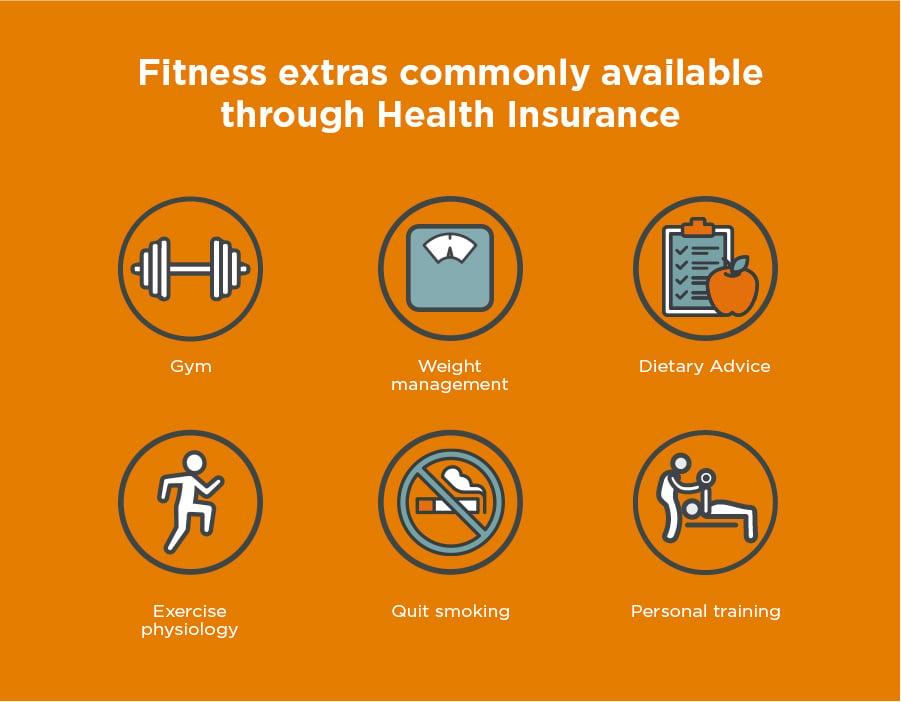Health Insurance Gym Memberships: Get Fit and Save Money
Health Insurance Gym Memberships: Get Fit and Save Money
Compare Health Insurance Policies
Save time and effort by comparing a range of Australia’s health funds with iSelect
Does Health Insurance cover gym memberships?
What other health and fitness benefits can I get?
Why do some health insurers offer benefits towards gym memberships and fitness classes?
How much of your fitness costs will Private Health Insurance cover?
How do you make a claim on gym membership and fitness extras?
How do you find a suitable policy that offers cover towards gym memberships?
We all know that exercise is an important part of keeping healthy. That’s why some Health Insurance plans provide rebates and discounts for gym memberships. Heck, some insurers even provide cover for fitness classes. But which policies offer this kind of Insurance? Let’s take a look to find out!
Does Health Insurance cover gym memberships?
In short, yes it can – but it depends on the fund and policy. When it comes to gym memberships, it’s Extras Cover – not Hospital – that may help cover the cost. While Hospital Cover has a bunch of benefits but it usually just covers in-hospital treatments, so it isn’t going to help you with your gym fees.
Extras Cover is there to help with the costs of general services; the things you get outside of hospital like physiotherapy, glasses or general dental treatment. And this can also extend to preventative health services like gym memberships and fitness classes.
Do all Extras policies include gym memberships?
No, it’s important to be aware that not every Extras policy includes benefits towards gym memberships! You’ll want to put on your detective hat and do some research before you commit to anything. iSelect can help you compare Extras policies* to see if we can find one that can help with your gym membership.
What other health and fitness benefits can I get?
Extras Cover might help you with more than just gym memberships. Some plans may also include discounts or benefits towards personal training sessions and weight management programs. Most funds may require you to have a health professional fill in a form to state you require the membership or program to improve a specific health condition.1Bupa – Mole mapping & gym membership
Policies usually refer to these fitness benefits as ‘health management,’ ‘lifestyle,’ or ‘wellness’ benefits. If you already have Health Insurance with Extras, check these sections of your policy documents. You may already be covered for gym membership benefits that you aren’t claiming.
Some health insurers also have agreements with particular gyms or instructors. This may help decide which insurer is the most suitable fit. iSelect can help review a range of policies and providers* to see if we can match a plan to the type of fitness cover you’re after, or one that involves the gym closest to you.
Finally, it’s important to note that some natural therapies, including yoga and naturopathy, can no longer be covered under Health Insurance policies.2Australian Government | Department of Health and Aged Care – Natural Therapies Review 2019–20 This means that you will not be able to claim any benefits for these treatments.

Why do some health insurers offer benefits towards gym memberships and fitness classes?
The answer is simple. Gym memberships and fitness classes are often viewed by insurers as having a preventative health benefit, both to them and you! Basically, the healthier you’re living now, the less likely you are to have significant health issues later. They’re not just doing this because they’re good Samaritans either; it’s because a healthy lifestyle could make you a lot less likely to claim for chronic illnesses in the future.
Cardiovascular disease (CVD) is a particularly nasty problem that many Australians face. About 6.2% of Australian adults (over 1 million people) report that they’re living with CVD.3Australian Government | Australian Institute of Health and Welfare – Heart, stroke and vascular disease: Australian facts From 2020-21, there were 600,000 hospitalisations where CVD was the main cause.4As above It accounts for billions of dollars in spending, and the cost is predicted to grow.5ScienceDirect – Lifetime Costs of Hospitalised Cardiovascular Disease in Australia: An Incidence-Based Estimate
Diabetes is another disease that is a considerable cost to the Australian health system, costing $3.1 billion in 2019/20 alone.6Australian Government | Australian Institute of Health and Welfare – Diabetes: Australian facts
Exercise can not only help prevent chronic health issues such as CVD or diabetes but can be used to manage many of them as well. Exercise and physical activity are an important part of good asthma management, and they remain an excellent way to increase heart health, mental health and reduce back pain.
How much of your fitness costs will Private Health Insurance cover?
Health Insurance gym membership and fitness benefits differ by provider. They’re also subject to change over time. They may be percentage-based or have monthly or annual limits. Make sure to check any conditions when you sign up, as it’s important to know if these affect the amount you can claim. And remember, not all Extras policies will pay benefits to help cover your fitness costs.
How do you make a claim on gym membership and fitness extras?
Your GP, physio, or healthcare physician may have to sign a health management form, and you should keep receipts for fitness services you plan on claiming. Also, your gym membership or fitness classes will need approval by your health fund. Check with your private health insurer to find out which fitness providers they work with. Some gyms, often larger chains, have considerable discounts on your membership depending on your provider, so it’s worth asking your gym if they’re affiliated with a particular health fund, or your fund if they are affiliated with a particular gym chain!
How do you find a suitable policy that offers cover towards gym memberships?
There’s a lot to consider when comparing health insurers: how much they provide in benefits, how much you can afford and which services they cover. It’s enough to make anyone’s head spin! Fortunately, iSelect can help make the process a little bit easier, so the only spinning you’re doing is in spin class.
We compare* a number of private health insurance plans with gym membership and fitness benefits. You can even weigh up different policies at a glance with our online comparison tool. So, give it a try—you might just find the policy of your dreams!
WE’RE HERE TO HELP
Need help with health insurance?
We can help you find a suitbable product for your needs

Health Insurance & Tax
Tax Implications on Health Insurance
About the Medicare Levy Surcharge
About the Life Time Health Cover Loading
Government Rebate & Means Testing

.svg)





